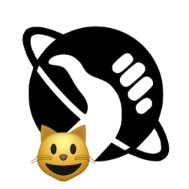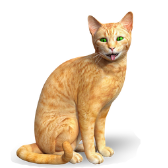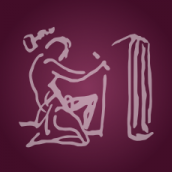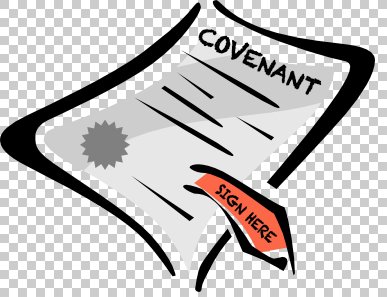
Furry
Members-
Posts
203 -
Joined
-
Last visited
Profile Information
-
Gender
Male
-
Location
Australia
Recent Profile Visitors
955 profile views
-
AffPhoto to replace Photoshop
Furry replied to Furry's topic in Affinity on Desktop Questions (macOS and Windows)
Thank you Pšenda and R C-R for your contributions overnight (from my point of view). I now have a much better understanding of the Flood Select Tool and its capabilities. No doubt further use of it will improve my understanding. Now I will move on to other skills I need to acquire in another thread. -
AffPhoto to replace Photoshop
Furry replied to Furry's topic in Affinity on Desktop Questions (macOS and Windows)
Thank you, Dan C. That video was very informative, thugh I couldn't see exactly what the small print was on my monitor. I tried it out on Sample 2 and I think I still need to learn a bit about operating the Flood Select Tool. How do I increase the size of its cursor? I trid the usual Command-left square bracket, but that did nothing. What do the various options in the top tool bar do? Eventually I tried selecting the grey and white squares with the FST and that worked a treat. Then I inverted the selection, copied and pasted to e new layer and then deleted rthe original layer. That may not be elegant, but at least it worked. Looks like you suggest something very similar, v_kr, while I was typing this post. Now, since I live on the other side of the world to you people, I am going to bed. -
AffPhoto to replace Photoshop
Furry replied to Furry's topic in Affinity on Desktop Questions (macOS and Windows)
I don't think the flood selection tool is availabe to me asI am still using v1. I cannot move to v2 until I master AffPh and ditch Photoshop. Then I can upgrade my OS and be able to use v2. But, until then, I am stuck in antiquity. I am restricted to Photoshop CS6 because my software does not earn me a living and therefore Adobe's subscription model doesn't make sense. Officially I am retired and so, according to some, I should just crawl off somewhere and do nothing. Sorry, but I don't play by that rule. Sorry to whine, but my inability to get AffPh under control is frustrating. -
AffPhoto to replace Photoshop
Furry replied to Furry's topic in Affinity on Desktop Questions (macOS and Windows)
I was afraid this would happen. My sample was intended simply to demonstrate the method I use but, unfortunately, each of you has concentrated on features of the example or AI solutions. I shouldn't need to use AI for this. So let's try a different example. This is a genuine .png that was offered on the internet. I took a screenshot of it so that I could show it here. It is not the full size that was offered, just a small version of it so that there is a certain amount of anti-aliasing around the edges, making it again a less-than-desirable example. How would you go about turning the checkered background into a genuine transparency, using Aff9inity Photo. Please concentrate on the method, not on the peculiaities of my sample. To be honest, with this particular example, I would probably reproduce it in Affinity Designer anyway! 😁 -
Furry started following AffPhoto to replace Photoshop
-
I am slowly getting to use AffPhoto more and more, but still find some tasks frustrate me when I find them so easy in Adobe's behemoth. My latest problem… From time to time I get a .jpg that is clearly a sceenshot of some other format that supports transparency, which .jpg does not. I want that transparency. When putting this posting together, naturally I couldn't find as good example. So I built one of my own, which I have attached. In Photoshop, all I needed to do was go to Image/Adjustments/Replace Color… and click on the grey of the checkered background. Because another grey in the image is very close to it, I needed to dial the Fuzziness down to zero to distinguishe betyween them. But then all the little grey squares were selected and I could then dial up the Lightness to 100% and, mostly, the grey squares woud disappear. (Oops! 🥵 My constructed example is not so good on this, betraying the fact that it is a constructed beast, created from an AffDes image! But I am sure you follow what I mean.) Having thus given the image a completely white background, it is relatively easy to select all the background using Adobe's Magic Wand Tool, invert the selection so that the main image is all that is selected, hit Command-J to create a new layer of just the main image, delete the original Background layer and save the result as a .png. Job done. How can I achieve the same results in Affinity Photo?
-
 thomaso reacted to a post in a topic:
Weaning myself from a long-term addiction to Photoshop
thomaso reacted to a post in a topic:
Weaning myself from a long-term addiction to Photoshop
-
No argument from me, loukash. As I said in my previous post, it is best to use non-destructive methods for the very reason that you have stated. I use sharpening because, more frequently than I would like, I am given a photo taken by someone who has very few clues about photograhy and they have managed to move the camera (often a phone) while taking the photo, just enough to make it a bit blurry. That's the problem when dealing with volunteers and amateurs. And, of course, they are the ones who get upset if you try to tell them their picture is not good enough. But I live with it. 🙂
-
Thanks for your reply, loukash. APh v1 is fine by me as I am still using Mohave and so cannot (on that machine) use v2. Yes, I agree that it is best to use non-destructive techniques. But mostly, when I am satisfied with an image, I usually export it as a .jpg (or even as a .png if it includes transparency) as mostly I use images in weekoy newsletter .pdfs that are for viewing onscreen rather than for printing. Often that means I can discard the original file as I am unlikely to need it again. Is there any rule of thumb for sharpening methods, such as, for example, if it already has a lot of contrast, use method x; or perhaps, if it includes a close-up of facial features, method y is best? I just feel so out of my depth that I am unsure even what questions to ask.
-
Time for my next lesson. Sharpening is relatively easy in Photoshop and I use the "Smart Sharpen" command without having to think about it too hard. I watched this Youtube video (https://www.youtube.com/watch?v=WsRWBHl4SnM) which talks about five different ways to sharpen in AffPhoto and I ended up swimming in too much information. Which method is best? And is it a case of certain methods being best in certain situation? If so, can someone offer me a simple rule of thumb, remembering that I have a repitation as a slow learner!
-
OK. Time for me to pose my second task . . . When using Photoshop, if I select part of an image and then go to Photoshop, automatically it knows the pixel size of my selection, allowing me to paste a copy of that selection onto a white canvas without my needing to measure the pixel size in any way. If I select part of an image and go to Affinity Photo, I need to know the pixel size of my selection so that I can create a canvas onto which to paste it. I don't know how to discover the pixel size without opening it in Photoshop. Is there some way to achieve this?
-
 Komatös reacted to a post in a topic:
Weaning myself from a long-term addiction to Photoshop
Komatös reacted to a post in a topic:
Weaning myself from a long-term addiction to Photoshop
-
 smadell reacted to a post in a topic:
Weaning myself from a long-term addiction to Photoshop
smadell reacted to a post in a topic:
Weaning myself from a long-term addiction to Photoshop
-
 NotMyFault reacted to a post in a topic:
Weaning myself from a long-term addiction to Photoshop
NotMyFault reacted to a post in a topic:
Weaning myself from a long-term addiction to Photoshop
-
Thank you all for those additional comments since last I posted. My biggest danger now is information overload. That official v1 video looks interesting and I may come back to it. But I think this discussion has gone far enough for now (at least for me; if others want to take it further, that is up to them). I will now think about the next Photoshop tecnique I use and how it can be translated to APh. Stay tuned!






